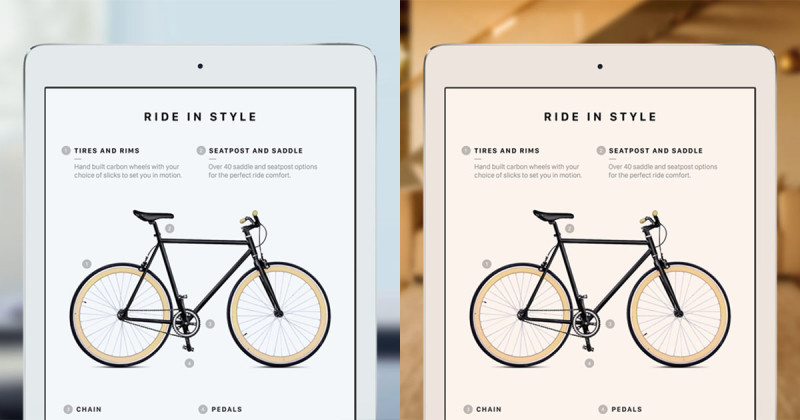Apple True Tone technology: an insight into the 9.7 inch Apple iPad Pro’s display
It has been argued that the difference between the iPad Air and the 9.7 inch iPad Pro, is very much like the difference between the MacBook Air and the MacBook Pro. Both can accomplish the same tasks, but the Pro version is considerably faster.

With that said, the differences between the iPad Pro and the iPad Air are actually quite a bit more broad and complex than one could rationalize in terms of sheer performance and speed.
One of the most interesting technological innovations that are part of the new 9.7 inch iPad Pro is the True Tone display, which enables the iPad Pro to detect light variations, using four sensors that measure brightness and light color, and automatically adjust the contrast and color of the screen.
This process is meant to replicate the way a physical sheet of paper appears in different lighting conditions. For instance, when there is less light, human eyes compensate the color and contrast, to create the illusion that the sheet of paper is white, even if the light reflected by the paper is of a much warmer shade. On a computer display, this doesn’t happen, because the back-illumination of the display has no regard for the light coming from the surrounding environment, as the display is its own light source.
The obvious drawback of a display that is unable to react to its surrounding environment, is that at night it will be way too bright and coarse, and when looked at in direct sunlight, it will be completely washed out.
True Tone in the 9.7 inch iPad Pro takes care of this problem using sensors to detect environmental luminosity, and adjust the display’s color and contrast accordingly, so that it may be visible in direct sunlight, as well as being comfortable enough in lower lighting.
While this technology is not new, the way it is implemented, particularly in references to the sensors used to detect light variations dynamically, is rather innovative, as color calibration is typically a manual, one-time task, on most computer displays, mostly due to the fact that they are usually in a space where light doesn’t change very often. An iPad Pro, on the other hand, is a device that travels with its owner as much as an iPhone does, and this requires the display to be visible and comfortable to use, at all times, in different light conditions, which makes True Tone technology a necessary feature.